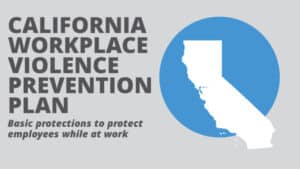Written By: Christopher B. Dolan
If You’re in the Stands, Keep Your Eye on the Ball: Over the past decade, at the beginning of baseball season, I have published a column concerning who is responsible if someone gets hit with a line drive, foul ball and/or broken bat while watching a game. As a lawyer, and a big Giants fan, I like to start off the season by saying, put down your cell phone and keep your eye on the ball during play. A distraction can lead to serious and even life threatening injury.
Balls and bats leaving the playing field and entering the stands are not uncommon. In a 2014 Bloomberg News analysis of ballpark injuries, it was reported that each year in the United States roughly 1,750 spectators are injured by batted balls at major league ballparks. The study showed spectators were much more likely to be hit with an errant ball than a player was to be hit with a pitch. While most injuries are thankfully minor, there are reports of severe injuries, and even death, due the sport’s use of wooden bats and 90 mph plus fastballs.
In an article published in the Boston Globe by Catherine Cloutier on June 09, 2015, Edwin Comber, a baseball statistician, is quoted as saying that about 73% of foul balls go into the stands. A 2000 lawsuit against the Red Sox revealed that during a five-year period in the 90’s, 36 to 53 fans per year were hit by balls outside the field of play. Furthermore, there have been reports of skull fractures and even brain injuries, as a result of bats and balls entering the stands. As the fans demand to be ever closer to the action, and the field is filled with high-priced seats closer and closer to the plate and baselines, the risk of injury goes up just as fast as the price.
The issue of liability for fans’ injuries was addressed by the California Supreme Court in 1935 in the case of Quinn v. Recreation Park Ass’n, 3 Cal.2d 725, where the court held that one of the natural risks assumed by fans attending major league games is that of being struck by batted or thrown balls. The Court ruled that the franchise and/or park owner/operator is not required, nor does it undertake, to insure patrons against injury from such source. All that is required is the exercise of ordinary care to protect patrons against such injuries. Management is not obliged to make each seat safe from flying balls. The court pointed out that many patrons prefer to sit where their view is not obscured by a screen.
The duty imposed by law is performed when screened seats are provided for as many as may be reasonably expected to call for them on any ordinary occasion and if a spectator chooses to occupy an unscreened seat or is unable to buy a screened seat and chooses to occupy one that is not protected, they, “assume the risk of being struck by thrown or batted balls; and, if injured thereby, is precluded from recovering damages therefor,” as stated in Brown v. San Francisco Ball Club.
In Neinstein v Los Angeles Dodgers Inc. (1985) 185 Cal.App.3d 176, the Court of Appeals held that:
…The quality of a spectator’s experience in witnessing a baseball game depends on his or her proximity to the field of play and the clarity of the view, not to mention the price of the ticket. As we see it, to permit plaintiff to recover under the circumstances here would force baseball stadium owners to do one of two things: place all spectator areas behind a protective screen thereby reducing the quality of everyone’s view, and since players are often able to reach into the spectator area to catch foul balls, changing the very nature of the game itself; or continue the status quo and increase the price of tickets to cover the cost of compensating injured persons with the attendant result that persons of meager means might be priced out of enjoying the great American pastime. To us, neither alternative is acceptable…
Despite the Court’s unwillingness to intervene to reshape baseball through tort law, I am happy to report that all thirty teams in the MLB have decided to extend safety netting and screening all the way down the first and third baselines to the foul pole. So, if you are in the lower section, you should be better protected from line drives and broken batts. If you are in the upper decks, keep your eye on the ball because, if you are in an unprotected seat, you are legally assuming the risk of injury.










